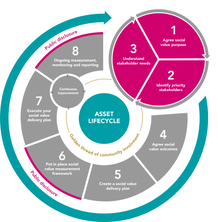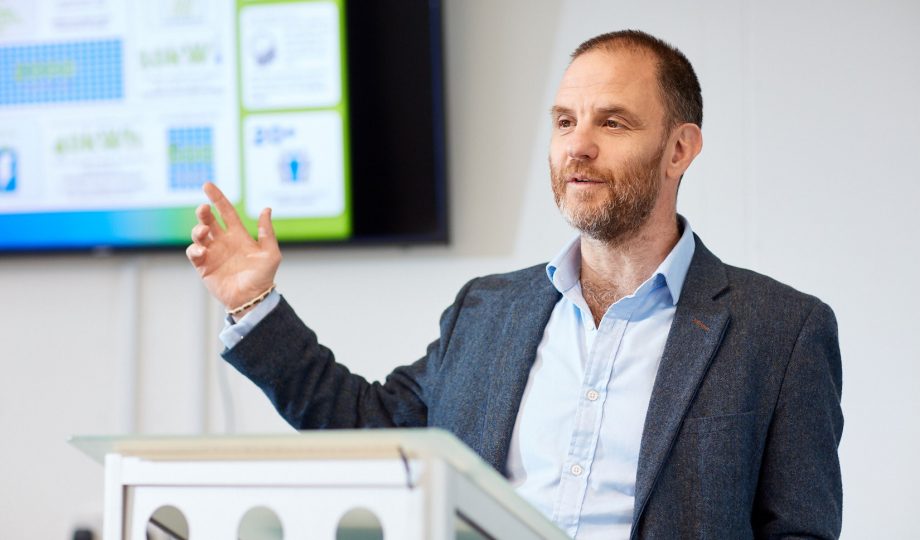Following the publication of its new social value toolkit, UKGBC’s Simon McWhirter discusses the growing focus on social value in the industry and why it must be integrated throughout any built environment project
Social value is rising up the agenda. During the early stages of UKGBC’s Social Value Programme, there was one challenge that was clear from the outset: the built environment sector needed to establish a definition of social value that focused on the impact that buildings, infrastructure and places have on people.
While we found lots of good practice, what was lacking was a common language for practitioners and a logical – and shared – process for delivering social value on built environment projects. That is precisely why last year UKGBC launched a Framework for Defining Social Value.
Together with industry, UKGBC created a framework for defining social value for any individual project or place, as well as a high-level process and set of principles for delivering social value across the asset lifecycle. This helped clarify both what social value means in the built environment industry and how it can feasibly be delivered.
Creating a deeper understanding of the importance of social impacts for sustainability
Since its launch in February 2021, the framework gathered more traction than we could ever have predicted or hoped for. There’s now continued momentum in the sector and a deeper understanding of the importance of social impacts for sustainability. This is evidenced not only by the widespread support for our work but also by the volume of new guidance published recently, ranging from topics such as measuring social value right through to embedding it into procurement, planning and design stages.
The wealth of resource available to the sector is both a blessing and a curse. While practitioners have a growing library of guidance at their disposal, the challenge is cutting through the noise and identifying which method, approach or toolkit is right for their project. Realising this, UKGBC identified a need to translate this guidance into a form that best supports project delivery. The industry needed straightforward guidance that is practical enough to be applicable to built environment projects of any scale, yet sufficiently detailed to include real-world insights and experiences from practitioners on the ground.
UKGBC’s new Guide for Delivering Social Value on Built Environment Projects
UKGBC has spent the last year working closely with our Social Value Partners to test UKGBC’s high-level process for delivering social value in the real world on live projects. From this exercise, we have developed a new delivery guide which translates the progress and learning from industry into one digestible toolkit.

The guide sets the scene by outlining a revised Process for Delivering Social Value, informed by feedback from UKGBC’s Social Value Programme Partners and member community. The remaining content focusing on project delivery and is split into three major sections:
- Delivery checklists: A short and sharp to-do list for project teams at each step of the process.
- Guidance notes: Practical task-by-task guidance, examples and common mistakes to support practitioners to deliver each step of the process.
- Case studies: Real-world experience on implementing social value strategies in the built environment projects and places, sourced from the Social Value Programme Partners.
The process for delivering social value is unique for each project. To ensure this has been fully embraced, flexibility is at the heart of this guide. Practitioners can select the content that is most relevant to them based on their discipline, role and the specific needs and timeline of their project. It is not necessarily designed to be read from front to back.
Looking ahead
Prioritising social value across our building projects has the potential to unlock a range of social, economic and environmental benefits to society. From tackling economic inequality, fighting climate change, improving health and wellbeing, and more recently, shielding the vulnerable against the impact of the ongoing cost of living and energy price rises.
Through offering a simple step-by-step process, checklists and guidance notes, it is UKGBC’s intention to show industry that delivering social value is both doable and important for any built environment project, regardless of the stage of its lifecycle. Improving the health, wellbeing and quality of life of people affected by the built environment around them is the ultimate purpose of our industry. Failing to pay proper consideration to this is negligent at best and will soon be considered irresponsible and immoral at worst.
With growing interest from government and business, ensuring positive and additional social value outcomes from all projects goes to the very heart of the built environment industry’s purpose. We hope this guidance and the learnings from the real-life experiences we have shared can go some way to supporting this.
We hope to have a wider impact by, for example, supporting local authorities and housing associations wanting to ensure their assets are delivering against the needs of the local community. The case studies – weaved throughout the report – exemplify how local authorities can be integral in this space.
There can be nothing more important and essential role to ensuring that communities thrive through building a just transition to net zero for many generations to come.

Simon McWhirter
Director of communications, policy & places
UK Green Building Council

















